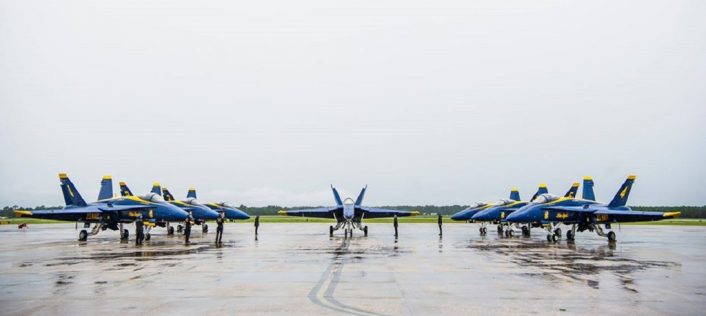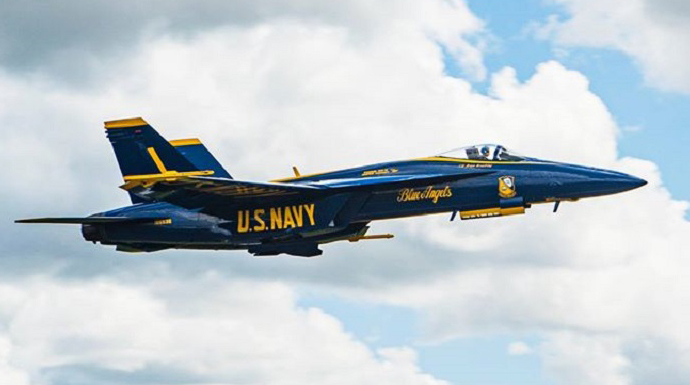The team will finally start the transition to the new aircraft later this year
The U.S. Navy Blue Angels received their first F/A-18E Super Hornet on July 27, 2020. The aircraft was flown from Cecil field, Jacksonville, home of the Fleet Resource Center South East (FRCSE), to Naval Air Station Pensacola by Capt. Eric Doyle, Director of the Blue Angels Super Hornet Transition Team and former Blue Angels commanding officer.
The Super Hornet, which was welcomed under the rain in Pensacola by the entire team, is Cmdr. Brian Kesselring’s aircraft, current Blue Angels commanding officer, with the classic number 1 on the tail. This first delivery marks the start of the team’s flying activity with the new F/A-18E/F Super Hornet after flying the F/A-18C/D “Legacy Hornet” for 34 years.
“Acquiring our first Super Hornet is a momentous step in our inevitable transition scheduled for later this year and it required a herculean effort to get these fleet jets ready for our team,” said Cmdr. Kesselring upon the delivery.
The first Super Hornet delivered the Blue Angels rolled out at Cecil Field in May, although it was still missing the tail number. The aircraft should be BuNo 165536, which is also the first of the two F/A-18s that were slated to be transferred to the Blue Angels after being used for Top Gun 2.

As our Editor David Cenciotti wrote in a previous article:
The Blue Angels should receive 18 Super Hornets, including two F/A-18F two-seat jets. Aircraft belong to the early Low-Rate Initial Production (LRIP) runs, meaning they are among the oldest Super Hornets in the fleet. In fact, it is the practice of the Blue Angels (and other display teams around the world) to adopt and refurbish high-flight time aircraft for use in their team to keep the newest aircraft in frontline service. For instance, as reported, one of the two single-seat F/A-18E Super Hornets used in the flying sequences of “Top Gun: Maverick”, bureau number 165667, a Boeing F/A-18E-53-MC Lot 22 Super Hornet from the Low-Rate Initial Production run 2 (LRIP 2) was among the first aircraft being converted to the Blue Angels configuration. In fact, along with the iconic blue and yellow paint scheme, the aircraft destined to the Blue Angels need a significant reconfiguration: work includes the removal of the M61A2 cannon and the installation of the smoke generation systems.
Recently, the Blue Angels performed the first flight with the new C-130J “Fat Albert”, former Royal Air Force Hercules C5 ZH885, which was refurbished at Cambridge Airport and is now undergoing a series of tests before the transatlantic flight that will take the aircraft to NAS Pensacola.













